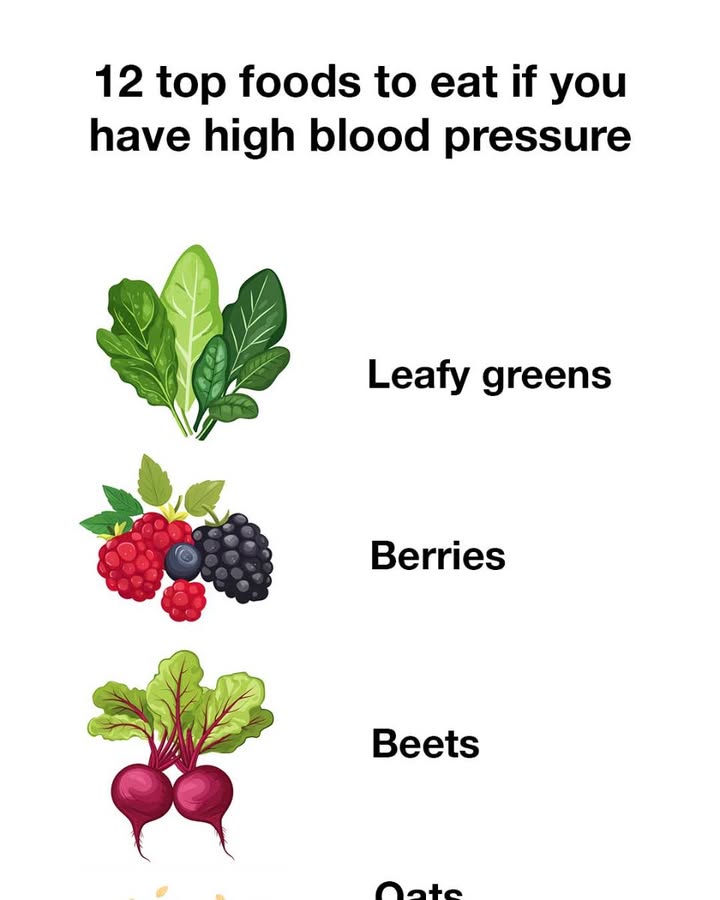12 top foods to eat if you have high blood pressure
Holly Owens
Contributing Writer
High blood pressure, or hypertension, is a common condition that can lead to serious health problems if not managed effectively. One of the most impactful ways to manage high blood pressure is through diet. By incorporating specific foods that are known to lower blood pressure, individuals can take proactive steps towards better heart health. This article explores 12 top foods that can help manage high blood pressure, offering a natural and delicious way to support your cardiovascular system.
Understanding High Blood Pressure and Its Risks
High blood pressure occurs when the force of blood against the artery walls is too high, which can lead to heart disease, stroke, and other complications. Often called the ‘silent killer’ because it typically has no symptoms, hypertension can cause damage to the heart, brain, kidneys, and eyes over time. Understanding the risks associated with high blood pressure underscores the importance of managing this condition through lifestyle changes, including dietary adjustments.
The Role of Diet in Blood Pressure Management
Diet plays a crucial role in managing blood pressure. Consuming foods rich in potassium, magnesium, and fiber while reducing sodium intake can help lower blood pressure levels. The DASH (Dietary Approaches to Stop Hypertension) diet is one such eating plan that emphasizes these nutrients and has been shown to be effective in reducing blood pressure. By focusing on whole, unprocessed foods, individuals can naturally support their heart health.
Leafy Greens: Nature’s Blood Pressure Regulator
Leafy greens such as spinach, kale, and Swiss chard are high in potassium, which helps the kidneys get rid of more sodium through urine. This process lowers blood pressure. These greens are also rich in nitrates, which have been shown to help manage blood pressure. Incorporating a variety of leafy greens into your diet can be as simple as adding them to salads, smoothies, or soups.
Berries: Antioxidant Powerhouses for Heart Health
Berries, particularly blueberries and strawberries, are rich in flavonoids, which are natural compounds that have been linked to lower blood pressure levels. These antioxidants help improve blood vessel function and reduce inflammation. Enjoying a bowl of mixed berries as a snack or adding them to your breakfast can be a delicious way to support heart health.
Beets: Nitrate-Rich Vegetables for Lowering Blood Pressure
Beets are high in nitrates, which are converted into nitric oxide in the body. Nitric oxide helps relax and dilate blood vessels, improving blood flow and lowering blood pressure. Drinking beet juice or adding roasted beets to salads can be an effective way to incorporate this blood pressure-lowering vegetable into your diet.
Oats: Heart-Healthy Grains for Blood Pressure Control
Oats contain beta-glucans, a type of soluble fiber that has been shown to reduce cholesterol levels and improve heart health. Regular consumption of oats can lead to modest reductions in both systolic and diastolic blood pressure. Starting your day with a bowl of oatmeal or adding oats to smoothies and baked goods can be a heart-healthy choice.
Bananas: Potassium-Rich Fruits for Balancing Sodium Levels
Bananas are well-known for their high potassium content, which helps balance sodium levels in the body and supports healthy blood pressure. This easy-to-eat fruit can be enjoyed on its own, sliced into cereal, or blended into smoothies for a convenient way to boost potassium intake.
Fatty Fish: Omega-3 Sources for Cardiovascular Health
Fatty fish such as salmon, mackerel, and sardines are rich in omega-3 fatty acids, which have been shown to reduce inflammation and lower blood pressure. These healthy fats also help decrease triglycerides and improve overall heart health. Aim to include fatty fish in your diet at least twice a week for optimal benefits.
Seeds: Nutrient-Dense Additions to Your Diet
